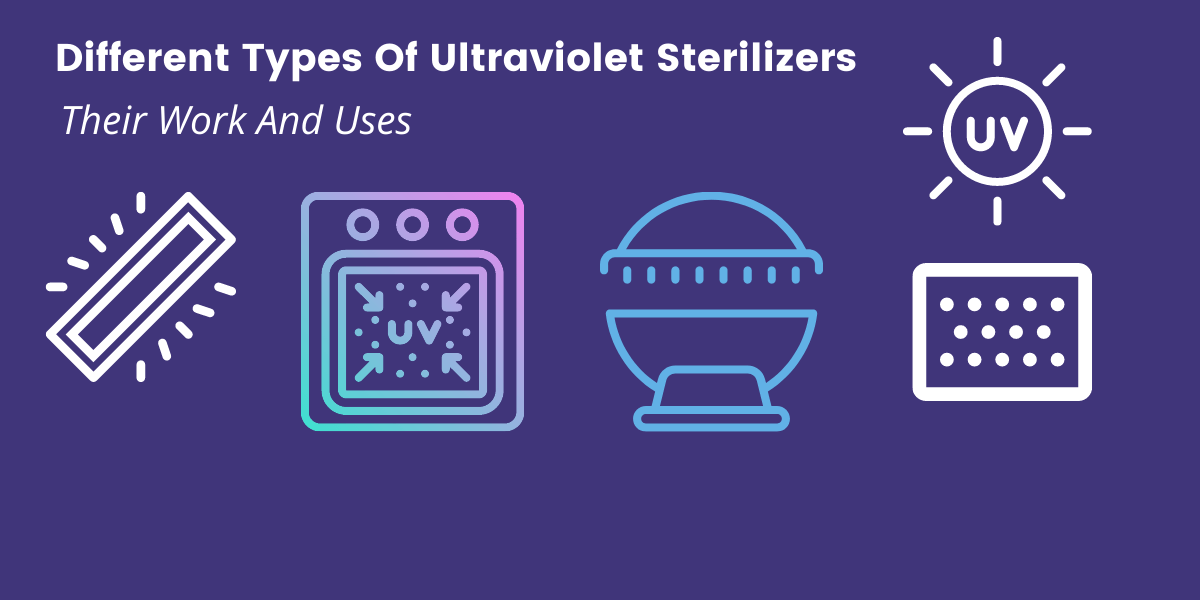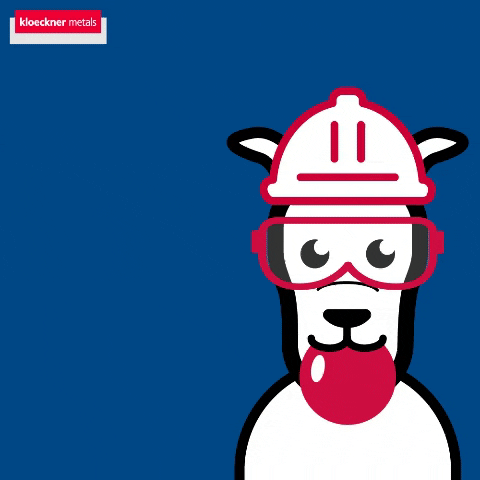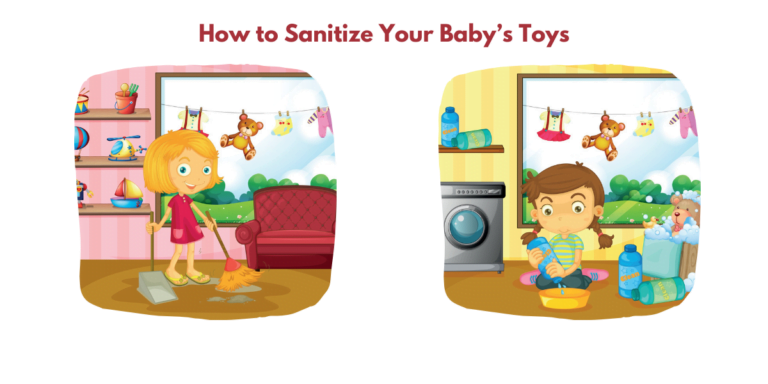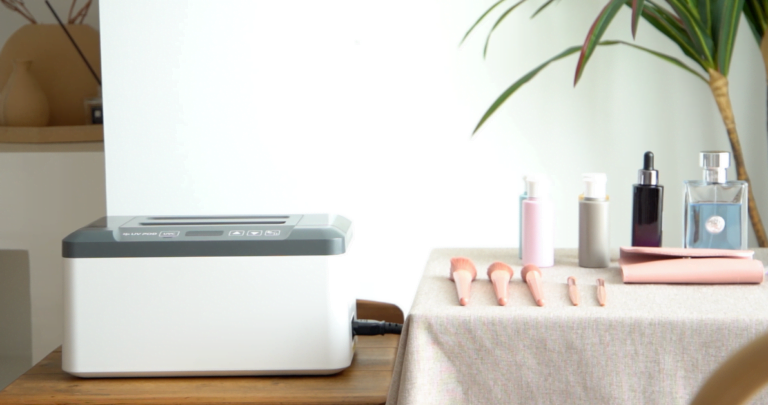Everything You Need to Know About UV Sterilizers and UV Disinfection
What are UV Sterilizers for disinfection?
UV sterilizers are designed to disinfect items using ultraviolet (UV) radiation. UV sterilizers use a high-intensity, short-wavelength light that destroys microorganisms by breaking down their DNA.
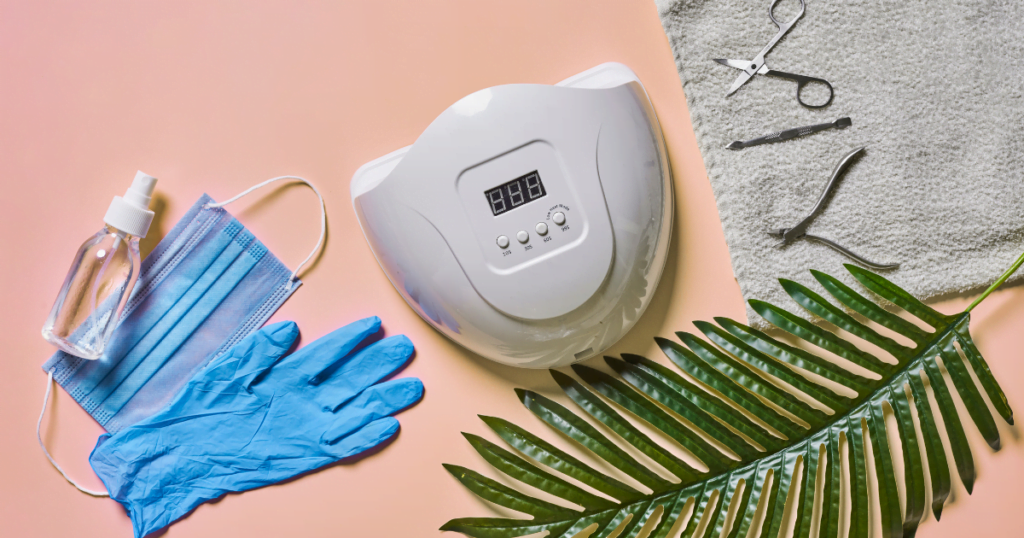
Do UV sanitizer lights work?
Does UV sanitizers work? UV sterilizers use ultraviolet light to kill bacteria, germs, and other microorganisms. The UV-C light emitted by the device penetrates the cell walls of pathogens, disrupting their DNA and preventing them from reproducing. This process can effectively eliminate up to 9% of key pathogens in minutes, making it a great addition to high-traffic areas like bathrooms or bedrooms.
What are the advantages of using a UV sterilizer?
UV Sterilizers are becoming increasingly popular as people look for ways to improve the quality of their environment. There are many advantages to using a UV Sterilizer, including the following:
Kills 99.9% of bacteria, viruses, and germs
Using a UV sterilizer offers many advantages. It is a great option for quickly and effectively killing bacteria and germs in areas where respiratory droplets are a concern.
Portable and convenient for on-the-go use
Many small UC sterilizers feature a convenient, portable design perfect for taking on the go. Their size allows them to fit easily in small areas, and their LED bulbs create enough UV-C light to quickly and effectively kill off viruses and bacteria. This makes the UV sterilizer both convenient and portable.
Sterilizes items in minutes
A UV sterilizer is a machine that uses ultraviolet radiation to destroy bacteria and other microorganisms. The machine exposes items to UV radiation, killing harmful bacteria and other pathogens. It is a reliable and effective way of sterilizing items such as masks, small objects, and medical instruments. The process usually takes no more than 60 seconds, and the user only needs to press one button to activate it.
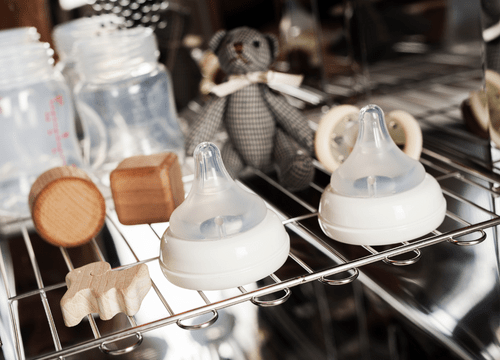
It can be used for a variety of items, such as baby bottles, toys, jewelry, cell phones, and more
A UV sterilizer can sanitize various items, such as surfaces, fabrics, or objects. It also can kill bacteria and viruses. Its universal tank design allows it to fit almost any item during its cycle.
UV light is safe to use and provides a chemical-free cleaning solution
Using a UV sterilizer can effectively kill off viral agents and bacteria in an area of up to 400 square feet while remaining safe to use. Additionally, it can be easily installed into any standard light socket, eliminating the need for any complex wiring or installation. Finally, the UV-C light used in these sterilizers is harmless on surfaces and not exposed to skin, making it a great addition for bathrooms or other areas where you spend time regularly.
It can be used to clean and disinfect surfaces, such as countertops, in the home or office
The use of UV sterilizers offers a variety of advantages, such as their effectiveness in killing bacteria and viruses. This makes them suitable for many potential locations, including hospitals, fire stations, pharmacies, restaurants, airports, churches, dentists’ offices, supermarkets/grocery stores, and food processing plants.
It can be used to purify air and water
Using a UV sterilizer has many advantages, including being automatic and chemical-free, providing continuous disinfection, and being effective at destroying bacteria and viruses. Additionally, UV sterilizers are easy to install and maintain while requiring minimal space.
Long-lasting and energy-efficient
Using a UV sterilizer has many advantages. One of the key benefits is that it typically uses long-lasting LED bulbs, so one can be confident that it will have reliable performance over time. It is important to consider how often the product will be used and how many bulbs come with it when purchasing to ensure maximum effectiveness. Checking the lifetime of the LED bulbs before buying a UV sterilizer should also be done to ensure cost-efficiency.
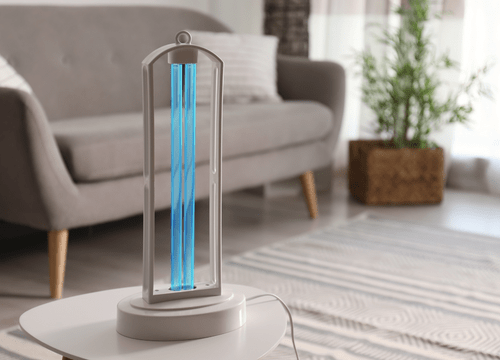
Can reduce the spread of disease-causing germs in the home or office
A UV sterilizer can quickly and effectively disinfect bacteria, germs, and other pathogens in as little as nine minutes. Additionally, these devices are typically portable and constructed with heavy-duty stainless steel. Furthermore, they can clean large bathrooms, bedrooms, and closets.
It can be used to reduce unpleasant odors in the home or office
UV sterilizers have many benefits, such as providing protection from dangerous infections, avoiding cross-contamination, and helping to keep hospitals, pharmacies, airports, churches, daycare centers, and school environments safer.
How do UV disinfection systems work?
UV disinfection systems are becoming increasingly popular in various industries, from healthcare to food and beverage processing. But how do they work? Ultraviolet light is electromagnetic radiation with shorter wavelengths than visible light. UV rays can be divided into three main categories: UVA, UVB, and UVC.
Step 1: Research and choose the right UV disinfection system
Researching and choosing the right UV disinfection system is important to ensure that the surface is effectively disinfected. This is because UV light disinfection systems require a consistent power supply. If the power fails or falls below the required level, it can prevent the system from disinfecting surfaces adequately.
Step 2: Install the UV disinfection system in the right place
A UV disinfection system should be installed at the point of contact between the water supply and where it will effectively disinfect the water.
Step 3: Connect the UV disinfection system to the correct power supply
Connecting the UV disinfection system to the correct power supply is essential for ensuring the system’s proper operation. If the power fails or falls below the correct operating level, the UV light intensity will also fail or fall, leading to an inability to disinfect safely.
Step 4: Select the right wavelength and intensity of UV light for the application
The right wavelength and intensity of UV light for a given application should be selected based on the intended use.

Step 5: Set the timer for the UV exposure
It is important to set a timer for UV exposure in a UV Sterilizer because it ensures that the items being sterilized are exposed to the optimal amount of UV light for effective disinfection. Without setting a timer, there is no guarantee that the items have been subjected to adequate disinfection time and could still be contaminated.
Step 6: Ensure proper maintenance of the UV disinfection system
Proper maintenance of a UV disinfection system is important because if the power fails or falls below the correct operating level, the UV light intensity will fail or fall, and the system will not be able to disinfect surfaces properly. Additionally, for a UV light disinfection system to work effectively, it needs to be located as close as possible to where it is being used.
Step 7: Monitor the performance of the UV disinfection system
Monitoring the performance of a UV disinfection system is important to ensure that the correct operating level of power is maintained for effective UV light intensity. Disinfection cannot occur without this, leading to potential backflow and recontamination. Furthermore, locating the system as close to the point of use helps reduce these risks.
Step 8: Adjust the settings of the UV disinfection system as needed
It is important to adjust the settings of a UV disinfection system to ensure that it operates effectively and provides adequate surface disinfection. Without proper adjustment, the system may not adequately eliminate contaminants from the surface, which could lead to health risks if the untreated surface remains in contact with humans for a prolonged period.
What to consider before purchasing a UV sterilizer?
When it comes to UV sterilizers, there are a few key things you need to consider before making your purchase. In this blog post, we’ll run through those key things so that you can make an informed decision about which UV sterilizer is right for you.
So, without further ado, let’s get started:
Type of UV light used
The type of UV light used in a UV sterilizer is significant because it can be used for various purposes, such as measuring the intensity or performing lab tests, analyzing DNA, testing for e-coli, sterilizing items, detecting mercury, and visualizing cells. Multi-band lamps with 254nm shortwave/365nm longwave UV sources are often preferred due to their lightweight and durable characteristics.
Wattage and intensity
It is important to consider wattage and intensity when purchasing a UV sterilizer, as these factors can affect the performance of the sterilizer. Different models are available with different wattages and intensities, so it is important to compare options before making a purchase. This will ensure that the user gets an effective product that meets their needs. Additionally, some brands offer replacement lamps or quartz sleeves in different wattages and intensities, which can be replaced over time to maintain optimal performance.
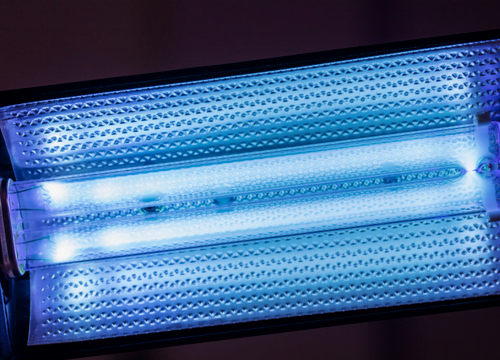
Lamp life and replacement costs
Considering the lamp life and replacement costs of a UV sterilizer before purchasing it is important, as the average life expectancy of LED bulbs is around three years. After two years (or 8,000 hours) of use, the germicidal lamp installed in the UVSD Cabinet should be replaced. Additionally, disposing of a UVC lamp properly by local environmental regulations should also be taken into account when deciding how often you plan on using it.
Filter plates and membranes
Before purchasing a UV sterilizer, it is important to consider the filter plates and membranes used. Filter plates and membranes are used to allow for easy loading and removal of filters, as well as helping to prevent bacteria from entering the machine. Different membrane support materials are available depending on the application, with Millipore offering Multi-Tier Micro Plates that are perfect for bacteriological analysis applications. The Millipore Classic Glass Filter Holder also features PTFE-coated membrane support which helps to further prevent bacterial contamination in machines.
Housing material and construction
The material and construction of a UV sterilizer are important to consider before purchasing to ensure the best protection from contamination. Different materials have different properties that can make them more or less effective at preventing contamination, such as chemical resistance, static control, and fire safety. By considering these features when choosing a UV sterilizer, buyers can be sure they are selecting the best product for their needs.
Size and portability
When considering which UV sterilizer to purchase, size and portability are important factors to take into consideration. If the sterilizer is too small, it will not be able to hold many instruments, while if it’s too large, it might not fit in the desired location. It is, therefore, essential to ensure that the sterilizer is appropriately sized for its intended use so that it can accommodate up to 36 masks or small items at once and has a 10-minute cycle timer with an automatic shutoff switch for safety.
Safety features
A UV sterilizer should feature safety interlock switches that prevent users from being exposed to UV light when the sash is raised, as well as a Polycarbonate and polypropylene design that reflects UV energy away. It can accommodate anything from a smartphone to a baby toy, makeup brushes, keys, and wallets. With its multiple internal bulbs, it ensures complete bathing of the exterior of objects placed within during a quick three-minute cycle with just one push of a button. Plus, an operation indicator light indicates when the sanitizing process is finished, so you know everything is completely clean and sterile.
Ease of installation
Ease of installation is an important factor to consider before purchasing a UV sterilizer because it can make setting up and maintaining the unit much easier.
Maintenance costs and frequency
It is recommended to replace a UV sterilizer every month or every few months, depending on the type of sleeve it has. The cost of replacement will vary depending on the model.
Replacement parts availability
It is important to consider replacement parts availability before purchasing a UV sterilizer to ensure the long-term operation of the system. Access to quality replacement parts can help reduce the need for costly repairs or replacements and keep your system running efficiently. Additionally, having access to these parts can help extend the life of your UV sterilizer and save money over time.
Operating costs
The operating costs of a UV sterilizer can be expensive, as they require a lot of energy to run. Purchasing a UV sterilizer can cost up to $130; however, subscribing and saving offers discounts. Amazon also commits to empowering small businesses with cost-effective solutions when it comes to UV sterilization.
Timer and shutoff
This UV Sterilizer and UV Disinfection unit has a 0-15 minute mechanical timer and a safety interlock switch that prevents exposure to UV light when the sash is raised. The design of this unit is made with polycarbonate and polypropylene materials to reflect UV energy away from the items being sanitized, allowing them to stay clean and sanitized for longer periods. Additionally, it features a timer and shutoff system that allows users to easily set schedules for their cleaning needs without worrying about losing track of time.
Warranty
The warranty is important to consider before purchasing a UV sterilizer, as it protects against any malfunction or defect in the product. The warranty also covers material and workmanship defects for one year after purchase, giving customers peace of mind that they are getting a quality product.
Effectiveness in removing pathogens
Research has shown that UV light is effective against all viruses, bacteria, and protozoa. However, some microorganisms have thick cell walls, which may protect them from the effects of low-power UV light systems. Furthermore, unfiltered water can contain iron, manganese, and other particles, reducing the effectiveness of UV disinfection systems.
Ability to reduce biofilm
The ability to reduce biofilm is an important factor to consider before purchasing a UV sterilizer, as it can help prevent the carry-over of organisms from one filter holder to the next. Furthermore, periodic treatments with chlorine can help remove any biofilm buildup over time.

Ability to reduce viruses
The ability to reduce viruses is important to consider before purchasing a UV sterilizer, as UV light is effective against all viruses, bacteria, and protozoa. However, some microorganisms have thick cell walls that UV light systems cannot penetrate. UV sterilization can kill drug-resistant viruses commonly found in hospitals when combined with standard sanitization practices.
Ability to reduce bacteria
The ability to reduce bacteria is an important factor to consider before purchasing a UV sterilizer because UV light is an extremely effective way of reducing the chances of a pathogen outbreak. Its rapid attenuation ensures that it can be used as a preventative measure rather than a cure, and its low-maintenance nature makes it ideal for aquariums.
Ability to reduce mold and mildew
Before purchasing a UV light box, it is important to consider the ability of the sterilizer to reduce mold and mildew. This is because mold and mildew can spread rapidly, leading to health risks and potential environmental damage. UV sterilizers are designed to kill mold spores, helping to stop their spread.
FAQs
Here are some of the most frequently asked questions about UV sterilizers:

How strong does the UV light need to be to sanitize surfaces?
The purpose of this chapter is to provide information on cell phone cleaner, UV sanitizer box, and UV disinfection, including how a UV bulb can be used to sanitize areas up to 400 square feet in size, the design of the bulbs with 30 LED lights that create enough UV-C light to kill viruses and bacteria, as well as information on the wand sterilizer which can be connected to an AC outlet or run on a battery.
How long does UV light take to sterilize?
Sterilization can take a few seconds to several minutes, depending on the size and type of sterilized object. The length of time will also depend on the strength of the UV light.
What is the best UV light sanitizer?
There is no one answer to this question, as everyone will have their preferences. There are different brands that you can check out on the market like Cleanpod UVC sterilizer, and UV Pod.
- Everything You Need to Know About UV Sterilizers and UV Disinfection - March 26, 2022

